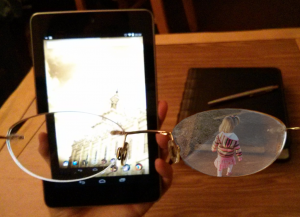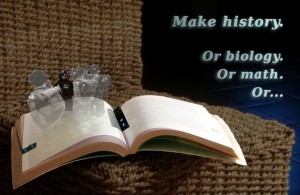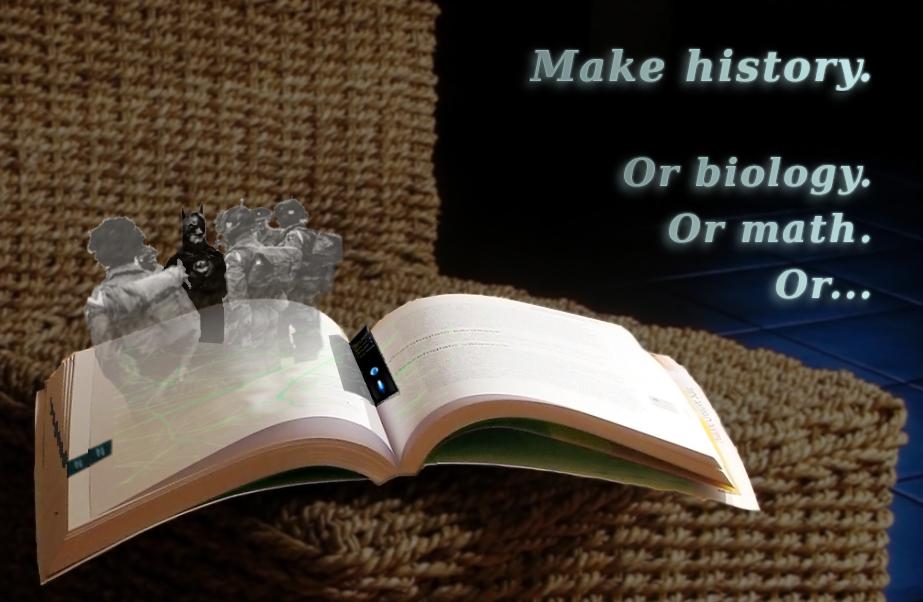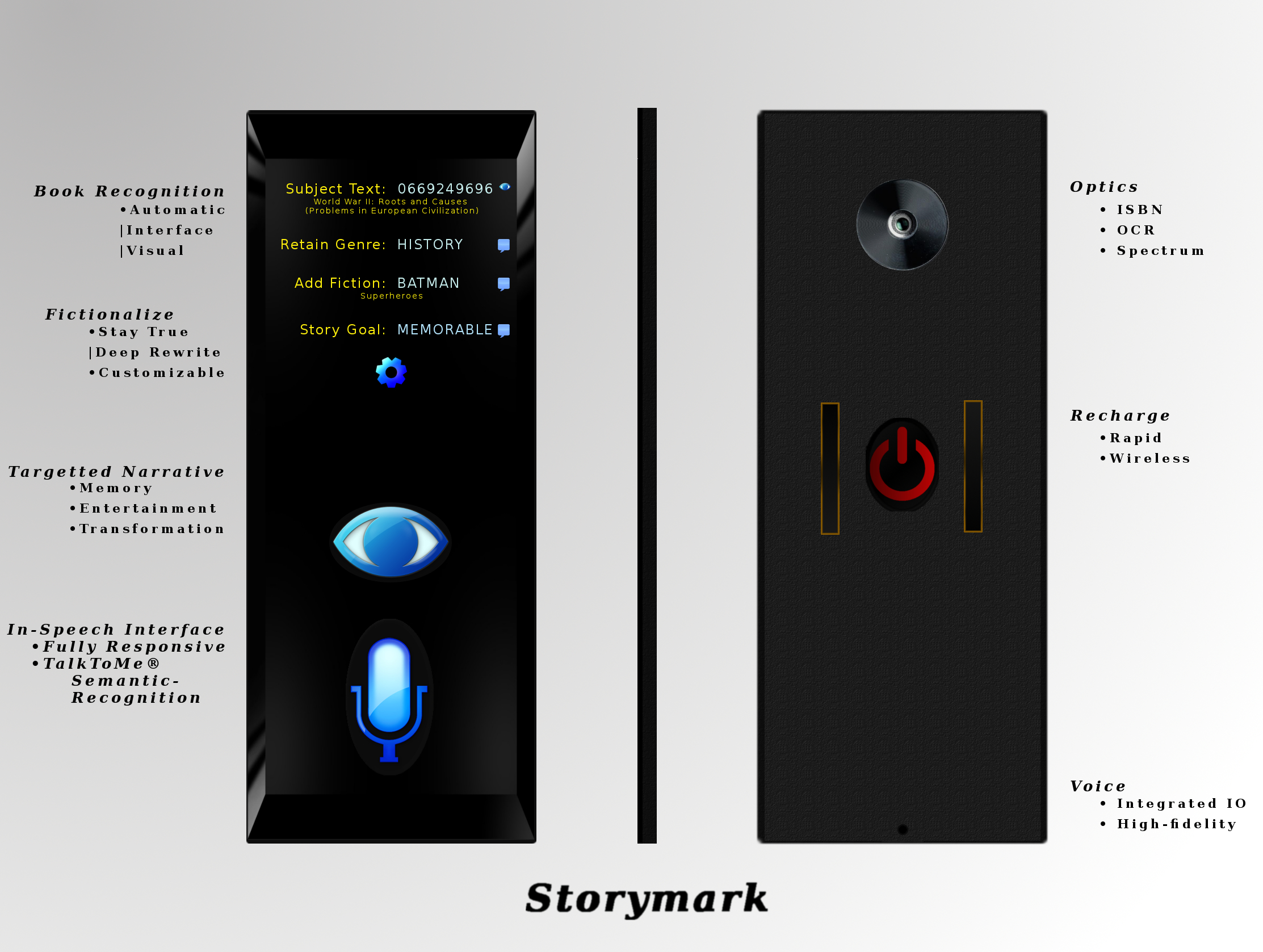Seeking a Subject
Throughout the project I found myself extensively applying the doctrine of idea-shopping that is predominant in a hacking/tinkering approach to ideation. At the beginning this method was prompted by the requirement that we base our work on existing research. I browsed through a list of government research and examined design websites for speculative fiction; I found a variety of interesting examples, but most were sophisticated videos somewhat like the Nokia concept video we watched in class. Subject searching eventually led me to the GT archive of recent PhD’ and Masters’ projects where I found a familiar name: Bryan O’Neill, whose work with Dr. Riedl and others constitutes a major part of the literature on which my own thesis research is founded. The subject is narrative generation.
Wireframe Sketches
Unfortunately, narrative generation is an abstract process that didn’t prove easy to visualize in an iconic way, despite the fact that it has a plethora of potential uses. The sketch portion of the assignment produced five possibilities and associated imagery:
- Infinite Entertainment (infinity symbol + TV)
- Parsed Education (stories) Information processor (food processor)
- Automatic social media updates (help us)
- Automatic news parsing
- Social media summaries
As sketches with explanatory narratives associated, each was recognizable. But it wasn’t clear what would be suitable for a realism-focused visual design fiction.
Although I had chosen my base technology of narrative generation, I was back to idea-shopping for a manifestation of this technology. I continued to build a folder of images that I had started for the earlier phases of the project, including images of journal writing, Google glass, book reading, and more. Eventually this image collection grew to 38 images. Along with this effort I corresponded with our instructor, who suggested that when dealing with a soft technology I extend it to some logical extreme in order to have something to more readily portray.
An idea for the interim presentation was ellusive until the first day’s presentations, when Kristjen’s image provided the idea of looking through glasses. With this idea in mind I rapidly threw together a simple image that focused on the idea of using narrative generation to process personal information like journals, social media, or recorded experiences via something like Google glass. The result was effective as an interim presentation that produced valuable feedback, but was of poor image quality and didn’t work to highlight the functioning of narrative generation. I gave up the idea of staging my own photo and decided to adapt a stock photo.
Final Image Composition Ideation
Can we produce creativity or inspiration on demand? This question was answered by research I am involved with in computational creativity, which is founded on the idea that creativity can be approached formally and with method. A total of over seven hours had been spent “idea shopping” without any sudden burst of direction for this project, and I was not able to spend that much time again to recreate some version of my interim composition. In the name of ‘method’, I called in my wife and we sat and went through the three-dozen images I had gathered so far for inspiration, considering narrative generation with each one. Eventually we setled on one high-resolution photo, a nice composition of a text book open on a wicker chair in a basement. With fictional license based on the idea of taking it to the extreme, I decided to combine holograms with textbooks to produce a strong image to embody narrative. An image search for anachronisms lead me to a site with historical photos having superheroes inserted into them; I grabbed the best of these for use as the hologram and began the work of photomanipulation.
A final concern was based on concerns raised for my interim image, where a pair of glasses had distracted the audience from the actual technology I wanted to focus upon. With this concern in mind I decided to embody the technology in a bookmark-like device that would allow a clear object of reference. Combining these three ideas I composed the specification image of just the Storymark and the primary image with the book.
Resources
Base Technology:
- Brian O’Neill PhD Dissertation: https://smartech.gatech.edu/handle/1853/5041
- Mark Riedl Research: https://research.cc.gatech.edu/eilab/mark-riedl
Images:
- Base Primary Image: http://www.sxc.hu/photo/1106140
- World War II Batman Anachronism: http://www.geekologie.com/2009/10/i-like-superheroes-in-old-war.php
- Base-image for Storymark Device: http://deccacontract.com/img/finishes/black-mirror-glass.jpg




